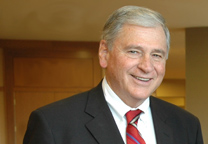 According to William G. Enright, Executive Director of the Lake Institute on Faith & Giving at the Center on Philanthropy at Indiana University, leaders in American congregations should be aware of a challenging trend in charitable giving:
According to William G. Enright, Executive Director of the Lake Institute on Faith & Giving at the Center on Philanthropy at Indiana University, leaders in American congregations should be aware of a challenging trend in charitable giving:
When we look at the data we have from our own center, if you look at about 1970 to about 1995 and if you look at all charitable giving, giving to religion was roughly half of all charitable dollars. Since 1995, what was one-half has now become one-third.
So What?
Considerable attention has been given to how the economy has impacted local churches (e.g., Giving Less) and whether or not the worst has now passed (e.g., Has Church Giving Rebounded). The question here, however, extends back before the recession and reflects an overall change in the type of charitable organizations donors select for their giving. With an awareness of this shift and what motivates giving, Enright (former senior pastor of Second Presbyterian Church in Indianapolis) suggests that rather than focusing appeals on the budget information congregational leaders should emphasize stories of transformation.
- Are you surprised to learn that as a portion of overall charitable giving, giving to religious causes has declined from roughly half to roughly one third of all giving in recent years? Do you expect this percentage to continue to decline? Why or why not?
- How well does your congregation do in telling stories of transformation as a part of its stewardship campaign(s)?
- Enright claims that “Increasingly, people want to know, ‘What difference does my gift make?’” In your local congregation, how is that difference communicated not only during stewardship season but throughout the year?